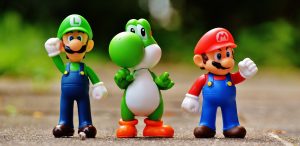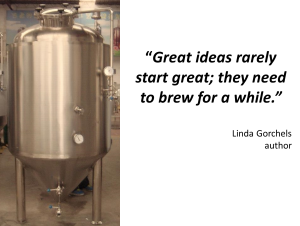
The creative process is not a singular flash of insight. It doesn’t come simply from throwing Nerf balls around the room. Or playing with Duplo blocks and pipe cleaners. There’s more to it than that. While there is no single “best-practice” approach to creativity, there are some typical components. And that’s true even for diverse disciplines.
When creativity is discussed from the perspective of the arts, it usually has a relatively individualistic, free-flowing aura. When it is applied to business, it is more commonly associated with innovation and the development of tangible (and profitable) value. Yet both stem from several similarities in general approach.
Here are the steps of creativity. Although I listed them sequentially, the actual process is more iterative than step-by-step. In fact, there is iteration and incubation as a sub-step of most of the steps. And actually, this is the basis of the non-linear iterative process of design thinking.

Creative Process Step 1: Frame the creative challenge
More and more research on creativity indicates that establishing boundaries actually heightens (rather than diminishes) creativity by ensuring focus. The curiosity I mentioned in a prior post may provide several sparks in the “fuzzy front end” of creativity. But going beyond these sparks and concentrating on selected “arenas” is generally necessary for creativity to flourish. Speculate on the product or service you want to develop or improve on. Contemplate the book you want to write or sculpture you want to shape. Picture the fund-raising campaign or advertising push you want to accomplish. Visualize what you want the output of your creativity to be, and what the potential constraints are as you move forward.
Creative Process Step 2: Gather data
Yes, data. Creativity happens when ideas spring from other ideas. What do you know, and what new information do you still need? Determine whether other people have already explored this arena, providing partial (or even total) solutions. Are there new technologies or attitudes or marketplace shifts you can benefit from? Don’t try to collect all information before proceeding to the next step because data collection is never truly complete. But if you try to start “creating” without knowing what is already out there, you may waste a lot of energy in reinventing the wheel (and perhaps not even as good a wheel as already exists!).
Step 2.5: Allow the data to incubate
So far I have alluded to the activities of the conscious mind; now I want to make a shift. Your subconscious mind is always processing data and looking for new solutions to a host of puzzles and questions. If you have been vigilant in framing the challenge and absorbing appropriate stimuli, ideas will begin to grow and take form, often without your conscious awareness. Give yourself the time and freedom for that to happen.
Creative Process Step 3: Build ideas
Nurturing data into ideas can be an individual or collaborative effort, depending on the creative arena. This step includes a sequence of divergent and convergent thinking. Start with divergent thinking, generating as many possible solutions as possible – allow your imagination to flow freely. How many ways can you magnify or minimize, lengthen or shorten, combine or separate, or otherwise establish a reasonable approach to the creative challenge? After generating numerous ideas, work to reduce the number into a manageable few; this is the process of convergent thinking. Moving from divergent to convergent thinking may happen once or several times, as you deliberate the ideas and concepts being formed.
Step 3.5: Allow the ideas to incubate
The more complex the creative endeavor, the more time will likely be required for incubation. Remember that your subconscious mind can incubate several ideas simultaneously, even though your conscious mind can handle only one at a time.
Creative Process Step 4: Tinker, evaluate & refine
Creativity benefits greatly from a test-and-learn approach, when experimenting and “tinkering” with ideas, concepts and prototypes is part of the overall process. Tinkering may begin as early as the data collection step, or may occur after incubation – and may even cause you to redefine the initial problem. This step can cause a lot of frustration, so you need enough resilience to bounce back from the failures you experience while tinkering. This is also the step that forces you to confront the potential downsides of your ideas.
Step 4.5: Allow experiments to incubate
Whenever the tinkering and experimentation highlight significant flaws or drawbacks, it may be necessary to allow further subconscious meditation to either overcome the flaws or make a decision to either redefine the problem or table the entire creative effort.
Creative Process Step 5: Execute
Assuming the ideas pass the final evaluation and incubation stages, the final step of the creative process is to do something. While this may seem obvious, many ideas die before becoming tangible creative outputs. Keep motivating yourself to the end.
